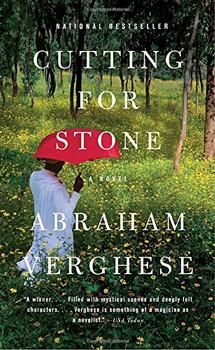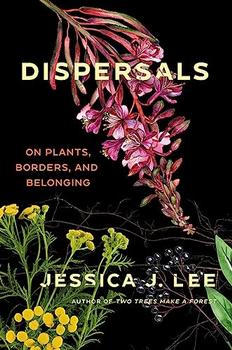Summary | Excerpt | Reading Guide | Reviews | Beyond the Book | Readalikes | Genres & Themes | Author Bio

Critics' Opinion:
Readers' Opinion:
First Published:
Feb 2009, 560 pages
Paperback:
Jan 2010, 560 pages
 Book Reviewed by:
Book Reviewed by:
Lucia Silva
Buy This Book
On the plaster above the desk my mother had tacked up a calendar print of
Bernini’s famous sculpture of St. Teresa of Avila. The figure of St. Teresa lies
limp, as if in a faint, her lips parted in ecstasy, her eyes unfocused, lids
half closed. On either side of her, a voyeuristic chorus peers down from the
prie-dieux. With a faint smile and a body more muscular than befits his youthful
face, a boy angel stands over the saintly, voluptuous sister. The fingertips of
his left hand lift the edge of the cloth covering her bosom. In his right hand
he holds an arrow as delicately as a violinist holds a bow.
Why this picture? Why St. Teresa, Mother?
As a little boy of four, I took myself away to this windowless room to study the
image. Courage alone could not get me past that heavy door, but my sense that
she was there, my obsession to know the nun who was my mother, gave me strength.
I sat next to the autoclave which rumbled and hissed like a waking dragon, as if
the hammering of my heart had roused the beast. Gradually, as I sat at my
mother’s desk, a peace would come over me, a sense of communion with her.
I learned later that no one had dared remove her cardigan from where it sat
draped on the chair. It was a sacred object. But for a four-yearold, everything
is sacred and ordinary. I pulled that Cuticura-scented garment around my
shoulders. I rimmed the dried-out inkpot with my nail, tracing a path her
fingers had taken. Gazing up at the calendar print just as she must have while
sitting there in that windowless room, I was transfixed by that image. Years
later, I learned that St. Teresa’s recurrent vision of the angel was called the
transverberation, which the dictionary said was the soul “inflamed” by the love
of God, and the heart “pierced” by divine love; the metaphors of her faith were
also the metaphors of medicine. At four years of age, I didn’t need words like
“transverberation” to feel reverence for that image. Without photographs of her
to go by, I couldn’t help but imagine that the woman in the picture was my
mother, threatened and about to be ravished by the spear-wielding boy-angel.
“When are you coming, Mama?” I would ask, my small voice echoing off the cold
tile. When are you coming?
I would whisper my answer: “By God!” That was all I had to go by: Dr. Ghosh’s
declaration the time I’d first wandered in there and he’d come looking for me
and had stared at the picture of St. Teresa over my shoulders; he lifted me in
his strong arms and said in that voice of his that was every bit a match for the
autoclave: “She is CUM-MING, by God!”
Forty-six and four years have passed since my birth, and miraculously I have the
opportunity to return to that room. I find I am too large for that chair now,
and the cardigan sits atop my shoulders like the lace amice of a priest. But
chair, cardigan, and calendar print of transverberation are still there. I,
Marion Stone, have changed, but little else has. Being in that unaltered room
propels a thumbing back through time and memory. The unfading print of Bernini’s
statue of St. Teresa (now framed and under glass to preserve what my mother
tacked up) seems to demand this. I am forced to render some order to the events
of my life, to say it began here, and then because of this, that happened, and
this is how the end connects to the beginning, and so here I am.
We come unbidden into this life, and if we are lucky we find a purpose beyond
starvation, misery, and early death which, lest we forget, is the common lot. I
grew up and I found my purpose and it was to become a physician. My intent
wasn’t to save the world as much as to heal myself.
Few doctors will admit this, certainly not young ones, but subconsciously, in
entering the profession, we must believe that ministering to others will heal
our woundedness. And it can. But it can also deepen the wound.
Excerpted from Cutting for Stone by Abraham Verghese Copyright © 2009 by Abraham Verghese. Excerpted by permission of Knopf, a division of Random House, Inc. All rights reserved. No part of this excerpt may be reproduced or reprinted without permission in writing from the publisher.




There is no worse robber than a bad book.
Click Here to find out who said this, as well as discovering other famous literary quotes!
Your guide toexceptional books
BookBrowse seeks out and recommends the best in contemporary fiction and nonfiction—books that not only engage and entertain but also deepen our understanding of ourselves and the world around us.